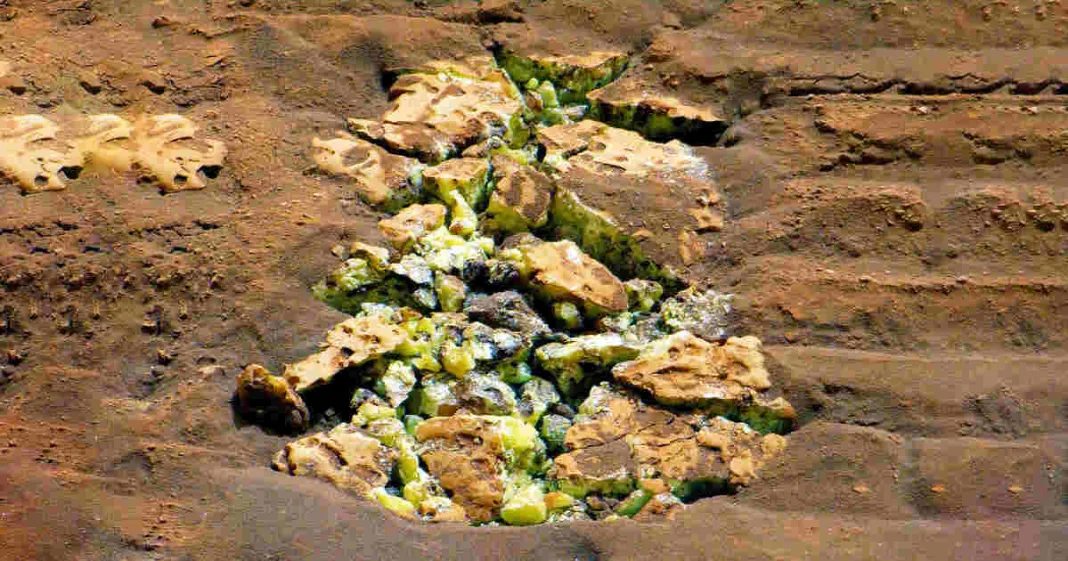NASA’s Curiosity rover, a tireless explorer of the Martian surface, has recently made a groundbreaking discovery. In May, the rover stumbled upon an area rich in pure sulfur crystals after accidentally driving over a rock and cracking it open. This find, the first of its kind on Mars, has left scientists both baffled and excited as they work to understand its implications.
Surprising Discovery
On May 30, while navigating Gediz Vallis—a channel winding down the slopes of Mount Sharp within the Gale Crater—the Curiosity rover ran over a small rock, inadvertently cracking it open. Upon inspection, NASA scientists observed peculiar yellow crystals within the rock’s newly exposed innards. These crystals, made of pure sulfur, were a stunning discovery as they had not been found on Mars before.
Read More: NASA’s Europa Clipper mission faces radiation challenge ahead of launch
“Finding a field of stones made of pure sulfur is like finding an oasis in the desert,” remarked Ashwin Vasavada, the mission’s project scientist at NASA’s Jet Propulsion Laboratory in Southern California. “It shouldn’t be there, so now we have to explain it. Discovering strange and unexpected things is what makes planetary exploration so exciting.”
Understanding the Pure Sulfur
Sulfur on Mars has previously been detected only in combination with other elements, such as in sulfates where it is mixed with minerals like magnesium and calcium. Pure sulfur, an odorless element that typically forms in very specific conditions, was not expected in this location. The discovery of these pure sulfur crystals raises intriguing questions about Mars’ geological history and environmental conditions.
In the past, sulfur found on Mars was part of sulfur-based minerals, which form when water evaporates. However, the pure sulfur discovered by Curiosity represents elemental sulfur, a form that scientists had not seen on Mars until now. This find suggests that the conditions under which these crystals formed may be unique or previously unrecognized.
Geological Context
The area where Curiosity made this discovery, Gediz Vallis, is part of a region that has been under exploration since October 2023. This region is rich in sulfates and other minerals that provide clues about Mars’ watery past. Scientists believe that Mount Sharp, which Gediz Vallis cuts through, was much wetter billions of years ago. The channel itself may have been carved by strong winds or violent water flows as the planet dried out.
The presence of pale rings or halos around some rocks in Gediz Vallis indicates past water-led chemical reactions, where minerals were deposited and later absorbed by the rocks. These signs of ancient water activity add another layer of intrigue to the discovery of pure sulfur crystals.
Future Implications
Curiosity’s find opens new avenues for research and exploration on Mars. The rover’s cameras captured images of the area littered with similar geodes, suggesting that pure sulfur might be more widespread than initially thought. Although the crystals were too small and delicate for the rover to sample directly, the discovery prompts further investigation into the geological processes that led to their formation.
Read More: NASA’s James Webb Space Telescope captures cosmic fireworks
Curiosity’s mission, now in its twelfth year, continues to yield valuable insights into Mars’ history. In addition to the sulfur crystals, the rover has recently uncovered rocks with manganese oxide, suggesting an oxygen-rich atmosphere in Mars’ past, and “waves” carved into an ancient lakebed by Martian water.














